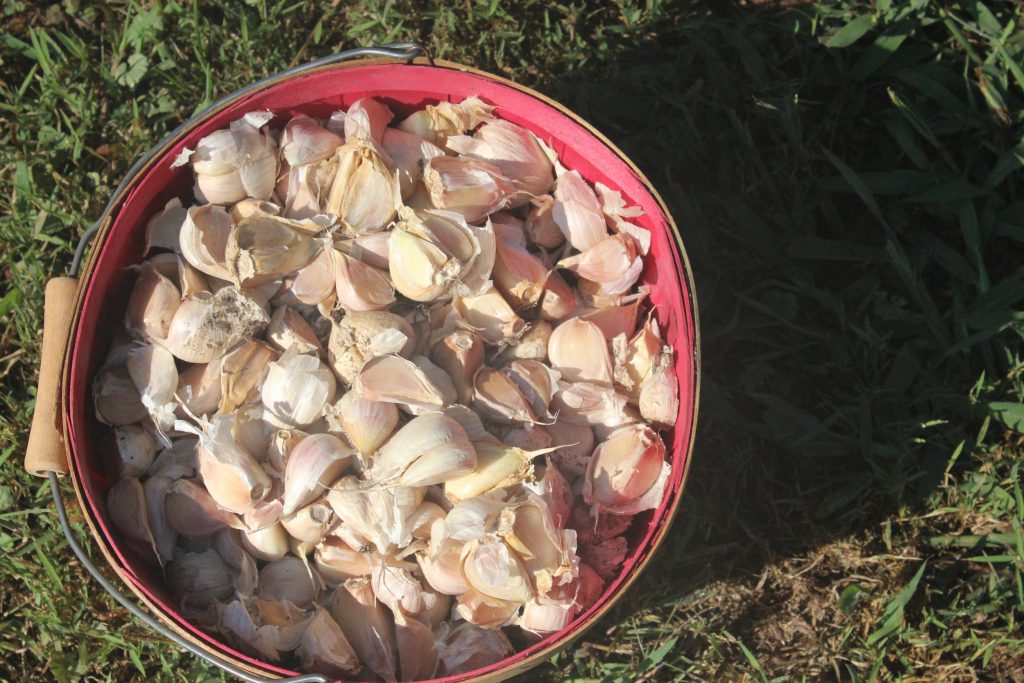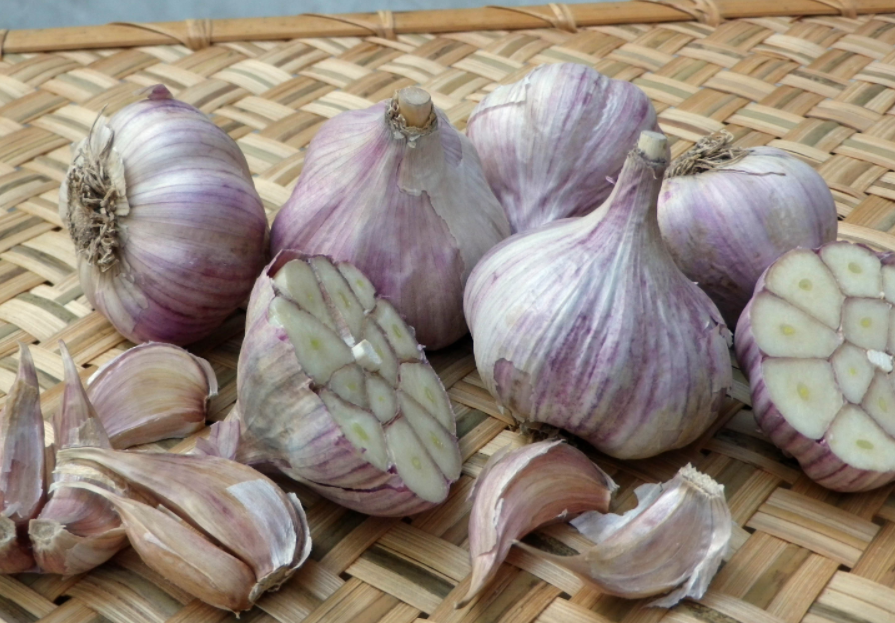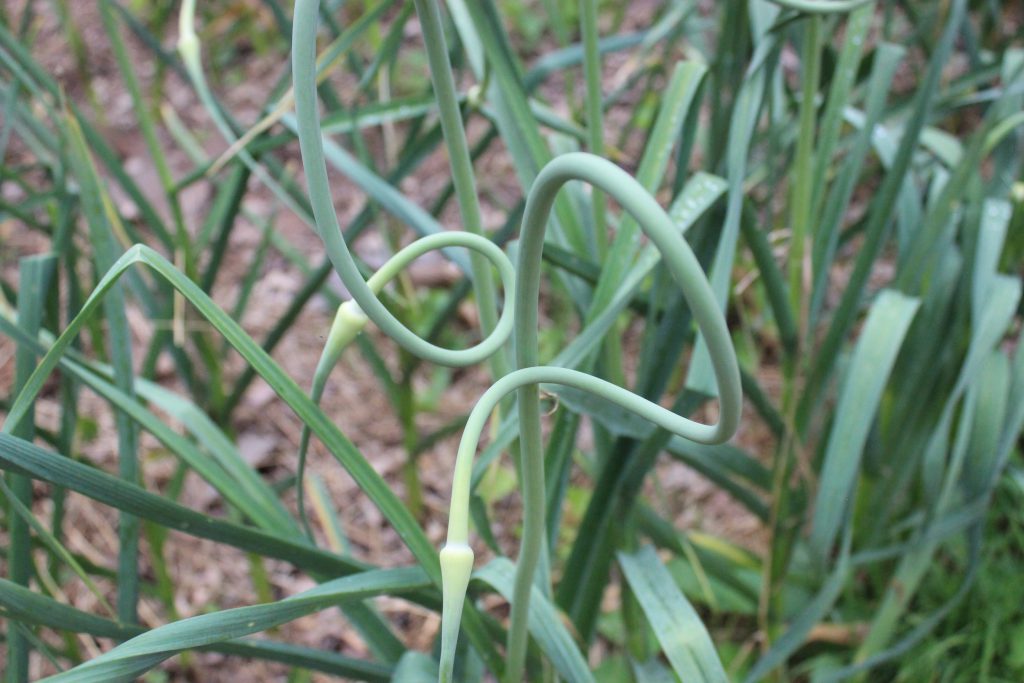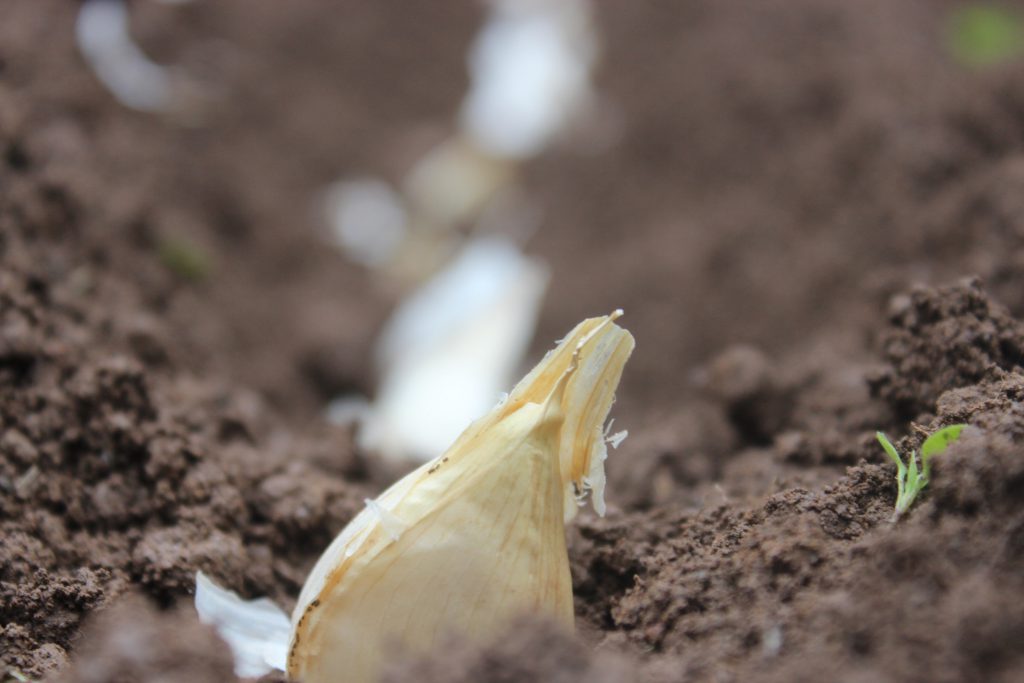
Garlic is one of my favorite crops. First there are few dishes cooked in this house that don’t include at least one clove. Second it’s super easy to grow. It generally has very few pest and disease issues. It also does well in storage. Absolutely perfect for backyard gardeners and farmers alike.
However just because garlic is an easy keeper doesn’t mean you can just throw it in the ground and ignore it. Read on for tips to help you get the best harvest.
Prepare the bed before planting.
Garlic can actually handle a range of soil conditions but does best in well-drained, loose soil. If you can, work in some organic matter like compost, aged manure, or well rotted sawdust and your garlic will do better. You may also want to consider using a garden fork or broad fork to lift the soil adding more air space.
Plant at the proper depth and spacing.
A proper depth and spacing will allow the bulbs to form well so you get nice size cloves and more uniform bulbs.
Keep it weeded.

Unless you live in a place with a lot of winter snowfall and consistent freezing temperatures you’ll probably need to do a bit of weeding throughout the fall, winter, and spring. It won’t be as bad as your regular season crops but it’s still important. Weeds compete for water, nutrients and if they get ahead of your garlic, light and space.
Keep it watered.
Especially if you live in a dry area it’s important to remember to water garlic while it’s actively growing. Garlic has shallow roots so for good bulb development it needs moist soils.
Use mulch.
Keeping you garlic properly mulched is essential for a healthy harvest. Mulch is important to keeping your garlic protected from frosts before it gets established. It also holds moisture, blocks weeds, and decomposes to add nutrients. It may be necessary to add more mulch in the spring depending on how much your mulch decomposes. You can also add a little compost mixed in with the mulch to give the garlic a little nutrient boost.
If you’re growing hardneck garlic, harvest the scapes.
Scapes are the flowering part of the garlic. If you clip them off while they’re still fairly small the plant will put more energy into the bulb instead of flowering. Garlic scapes have the added bonus of being delicious!
Let your garlic dry out before harvest.
About two weeks before you harvest you’re garlic you should remove the mulch and stop watering. This allows the garlic to begin drying for curing and storage.
Lastly read the Southern Exposure Garlic and Perennial Onion Growing Guide.
It has tons of good information for planting, growing, harvesting, curing, and storing garlic.



